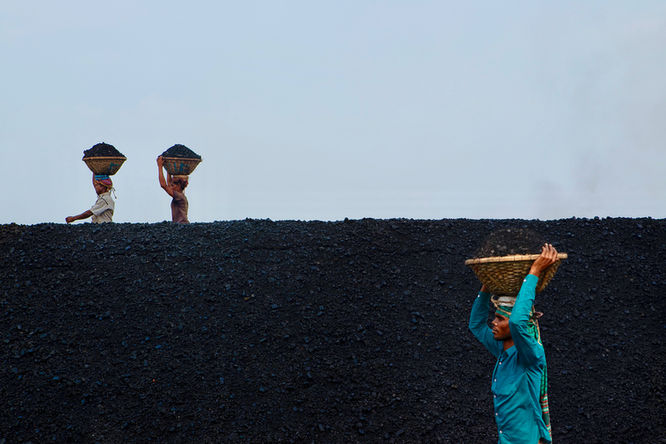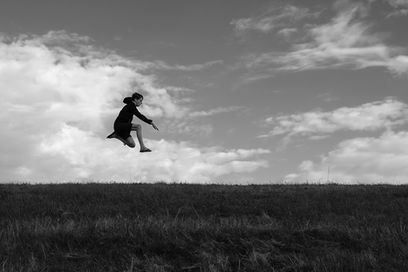
INTERVIEW
April 29, 2020
BEAUTIFUL COINCIDENCES
Photography by Adrian Whear
Interview by Bill Lacey
Adrian Whear is an autodidact from Melbourne who is renowned for his captivating street photography. He had a burning curiosity and passion for photography, but it wasn't until his travels to Ethiopia and Morocco that Adrian developed a deep understanding of the medium and its potential. His ever-evolving style has earned him the admiration of critics around the world.
But there is another side to this story. In 2016, Adrian's life took a dramatic turn when he was involved in a serious accident while commuting home from work. Fortunately, three years after the accident, Adrian still found it within himself to seek out adventure and inspiration. He began a journey to Hoi An, Vietnam, where he met Etienne Bosset, a travel photographer who taught Adrian valuable lessons about travel and documentary photography.
With newfound insight and understanding, Adrian returned to his beloved hometown of Melbourne, determined to capture life through his lens. Through his intimate exploration of the streets and alleyways, Adrian has crafted a unique vision that transcends traditional boundaries. In this article, we will explore Adrian's journey - from his accident to his photographic endeavors in Melbourne - and how this unlikely autodidact has become an inspiration to photographers around the world.

“My journey from happy snapper to more serious photography probably started in 2015 when I travelled through Ethiopia and Morocco. I took a snap in Casablanca of a woman walking past a mural that looked exactly like her, at that at the time I thought it was just an incredible coincidence that I captured. I have since learnt that these 'coincidences' are all around us, we just have to be attuned to our surroundings.”
IN CONVERSATION WITH ADRIAN WHEAR
THE PICTORIAL LIST: Adrian, please tell us something about yourself and how it influenced you finding your way into street photography?
ADRIAN WHEAR: Life often takes unexpected turns. For me, that was 2016, when I went through every cyclists worst nightmare. On my commute home from work I was hit by a car. I suffered some quite severe facial and dental injuries. It took three years, three surgeries and a team of dental professionals (oral and maxillofacial surgeons, endodontists, prosthodontists and my trusted dentist) to repair my mouth.
It was after my second surgery in 2017, that I decided I just needed a break from it all, so I decided that 10 days in Hoi An would be good for my mental and physical well being. In Hoi An, I joined a local travel photographer, Etienne Bosset on one of his photo walks. A lot of what Etienne said about travel and documentary photography resonated with me.
Upon returning to Melbourne I started to make the effort to go out and walk the streets and alleys of my hometown Melbourne and its inner suburbs, and in the process I started to discover my home cities true soul. From there I just photographed whatever captured my attention, slowly forming an understanding, vision and style for my photography.
Where do you find your inspiration?
From the world around me, documentary photography has taught me to be much more attuned to my surroundings. I want to capture and show this world that I see, that is right there in front of people yet it is in their blind spot.
Also I enjoy following the work of some amazingly talented photographers on Instagram.
TPL: Has your style of photographing changed since you first started?
AW: Most definitely, I would say my street photography has matured more towards minimalism and artistic street photography whilst I have a growing interest for documentary photography.
TPL: Who are your favourite artists/photographers and the reason for their significance?
AW: I am not a street photographer that has followed the works of the renown artists of the genre, nor have I completed any photography qualification. I am a mostly a self-taught amateur photographer.
TPL: Where is your favourite place to photograph?
AW: Well Melbourne is where I live and I so love its many small grungy alleys, they have so much character.
When travelling, anywhere in Asia for its mix of culture, people and food what more could you want! In 2019, I spent an incredible three weeks in Bangladesh but that story is for another time.
From the world around me, photography has taught me to be much more attuned to my surroundings. I want to capture and show this world that I see, that is right there in front of people yet it is in their blind spot.

TPL: Do you think equipment is important in achieving your vision in your photography? What would you say to someone just starting out?
AW: So my photography being of the street and documentary genre. Of course the equipment is important, a SLR camera, and knowing how to use it in full manual mode, gives you full control to achieve your creative vision. But it is the creative vision that is what makes you a photographer not the equipment.
I'll use a cycling analogy here, Chris Froome is a four times Tour de France winner. Now put me on Froome's bike and Froome on a cheap department store bike. Who would win this race? Obviously Froome, as the best cycling equipment in the world would not give me the talent of Chris Froome. You must work hard at your craft, trying to develop your skill and knowledge each and every time you go out to shoot.
So if someone were starting, I would say to to concentrate on your observation skills (sort of like active listening but from a visual sense) and to let go of technical perfection, story is more important.
TPL: What important skills do you think you need to become a good street photographer? What’s your tips or advice for someone in your genre?
AW: For me, the most important skills of the street photographer would be:
Observation - already discussed
Interpretation -Take the scene and find the story then compose to tell your story. Try to predict how people will interact within your scene (do they create long shadows, can you use the shadows to create a silhouette?).
Visualisation - Imagine what you want the final image to look like. Will it be black and white, high key, low key etc. Then photograph with that image in mind.
Patience - I often head out so excited to shoot and spend the first half an hour to an hour snapping pics just for the sake of snapping pics. Slow down, be patient, take your time and concentrate of being an observer. Once you have your scene then wait and wait and wait...for the right subject to complete your story to enter the scene (maybe someone in a hat or with an umbrella). You might need to revisit a location on a number of occasions to capture that shot.
My tip for a street photographer get a good pair of walking shoes. You've just gotta walk and walk and walk. Get out and about to see the light at different times of the day, and to find locations that you might want to revisit. Also remember to enjoy the walk. You will not always capture interesting photos but you can always have a great walk!
TPL: Have you ever been involved in the artistic world before photography?
TPL: Are there any special projects you are currently working on that you would like to let everyone know about?
AW: Well actually yes, I recently collaborated with a Singaporean photographer on an urban dance project. He travels to different cities to photograph dancers in urban scenes. He asked me to collaborate on his Melbourne shoots. I always have shot candid so it was interesting to observe him structure and build a scene. We photographed a range of dance styles including ballet, jazz, contemporary, break dance and even krumping (which I had not heard of until this project).
TPL: "If I wasn't photographing what would I be doing?...
AW: Easy one, cycling and watching my beloved Western Bulldogs."

Adrian's photography gives us an insight into his unique understanding, vision and style of the world around him. As Adrian continues to share his perspective with us through his photographs, we can all be inspired to create our own visions. View the links below to see more of Adrian's photography and gain inspiration for your own creativity.



































